[AGE6 00] MIDTERM: Lesson 6 Major European Arts
1/80
There's no tags or description
Looks like no tags are added yet.
Name | Mastery | Learn | Test | Matching | Spaced |
|---|
No study sessions yet.
81 Terms
Ancient Greek
It ___ art emphasized the importance and accomplishments of human beings.
Even though much of Greek art was meant to honor the gods, those very gods were created in the image of humans.
Its art stands out among that of other ancient cultures for its development of naturalistic but idealized depictions of the beauty of the human body.
Geometric, Archaic, Classical, and Hellenistic
The art of ancient Greece is divided stylistically into four periods.
Geometric
Four periods of Greek arts
Abstract and outline art
Archaic
Four periods of Greek arts
Stiff and primitive
Classical
Four periods of Greek arts
Sophisticated and realistic
Hellenistic
Four periods of Greek arts
Flowery and highly decorative
Geometric Period
Greek Arts
It marked the end of Greece's Dark Age and lasted from 900 to 700 BCE.
The ___ derives its name from the dominance of geometric motifs in vase painting.
Monumental kraters and amphora were made and decorated as grave markers.
Minoan Influence
Aside from Mycenaean ancient Egypt and Near East, Minoan art greatly affect Greek’s culture to a more functional and decorative but also political purpose, especially the wall paintings of palaces where rulers were depicted in their religious function, which reinforced their role as the head of the community.
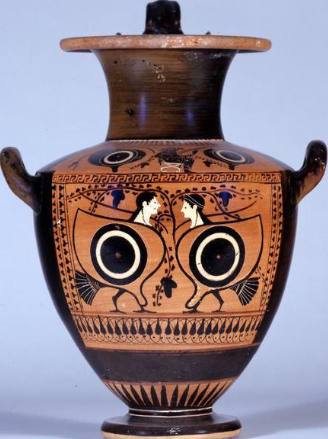
Geometric
Artistic development in Greece, ___ Minoan influence.
Octopus Pattern
Floral Pattern
Bee Pendant Pattern
Octopus Pattern
Geometric Minoan Influence
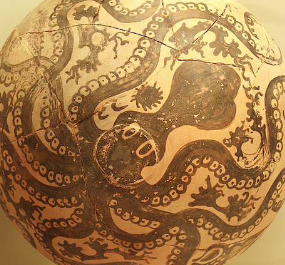
Floral Pattern
Geometric Minoan Influence

Bee Pendant Pattern
Geometric Minoan Influence
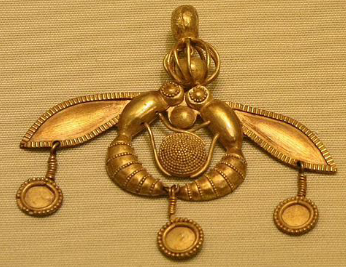
Notable Pottery Art
Greek Arts
Geometric Period
The Vasiliki Ware Teapot
The Lion Aryballos
The Minoan Octopus Vase
The Dinos of Sophilos
The Panathenaic Prize Amphora
The Vasiliki Ware Teapot
Greek Arts
Geometric Period
Notable Pottery Art
The First Luxury Pottery In Ancient Greece
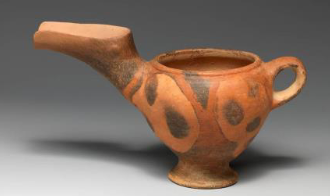
The Lion Aryballos
Greek Arts
Geometric Period
Notable Pottery Art
700BCE: A Celebration Of The Rise Of Corinth
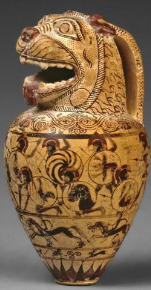
The Minoan Octopus Vase
Greek Arts
Geometric Period
Notable Pottery Art
1200-1100BCE: Pinnacle Of Bronze Age Pottery Design
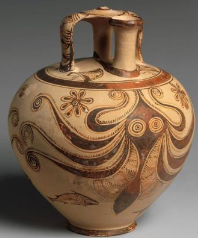
The Dinos of Sophilos
Greek Arts
Geometric Period
Notable Pottery Art
6th Century BCE: First Known Creator Of Greek Vase Paintings
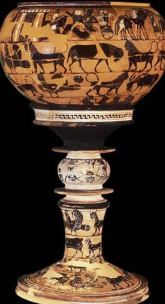
The Panathenaic Prize Amphora
Greek Arts
Geometric Period
Notable Pottery Art
4th Century BCE: A Celebration Of Athletic Prowess
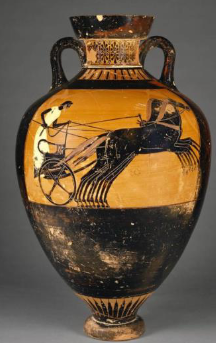
Archaic Period
Greek Arts
(650-480 BC)
In this period, the artisans began to focus more fully on real figures and elements of the natural world.
Artists were into more mystical and fantastical subjects such as combined beasts like the Sphinx or Satyr-like creatures.
Figurines and sculpture were beginning to imitate humanlike form.
These new artistic ideas were assimilated into creating ritualistic images inspired from their own religion and culture.
Koral
Greek Arts
Archaic Period
Block statues and figurines.
The ‘Kouros’ and ‘Kore
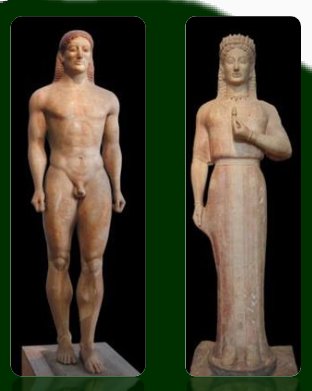
Moschophoros
Greek Arts
Archaic Period
The Calf Bearer
It is a Greek word which means the ‘calf-bearer’ from 560 BC.
It depicts strength and power and has a thick beard, a symbol of adulthood.
Notice that he stands with his left foot a little forward, the ‘Greek Stance’, an evidence that classical is about to emerged.
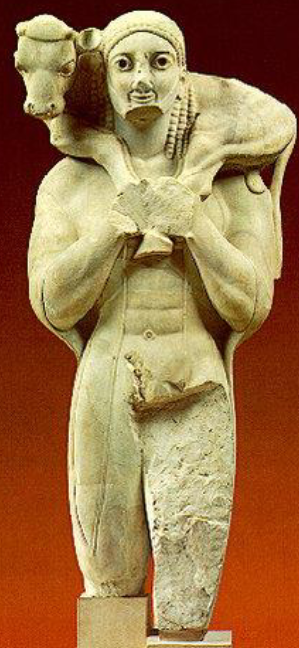
Classical Period
Greek Arts
(480-323 BC)
Sculpture In this period, Greek artists achieved a more realistic likeness in depicting human figure.
The statues for example show the influence of Egyptian art in its stiffness, gracefulness, idealization, and achieving naturalism by portraying them in a lifelike forms.
Most statues were commissioned for public display by the rich, noble and influential people
Michelangelo’s David
Greek Arts
Classical Period
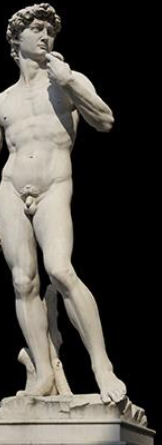
Contrapposto
Greek Arts
Classical Period
The Greek Stance, “___”, pronunciation [kontrapˈposto]) is an Italian term that means "counterpoise".
It is used in the visual arts to describe a human figure standing with most of its weight on one foot, so that its shoulders and arms twist off axis from the hips and legs in the axial plane.
![<ul><li><p>Greek Arts</p></li><li><p>Classical Period</p></li><li><p>The Greek Stance, “___”, pronunciation [kontrapˈposto]) is an Italian term that means "counterpoise". </p></li><li><p>It is used in the visual arts to describe a human figure standing with most of its weight on one foot, so that its shoulders and arms twist off axis from the hips and legs in the axial plane.</p></li></ul><p></p>](https://knowt-user-attachments.s3.amazonaws.com/892b3f9b-fa71-4044-8e68-f57c6fd0a22d.png)
Aphrodite of Knidos
Greek Arts
Classical Period
___ carved by the sculptor Praxiteles in the 4th century B.C. from fine marble, it enjoyed great renown as the first devotional statue of a female goddess in the nude.
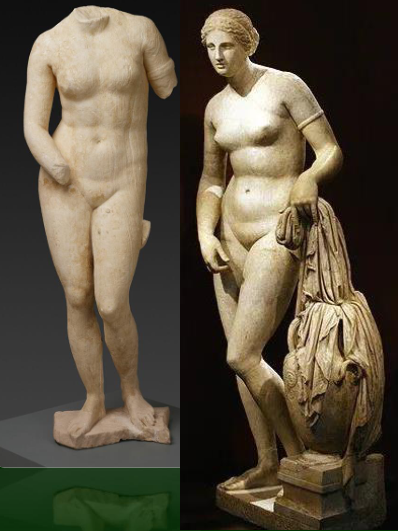
Hermes of Praxiteles
Greek Arts
Classical Period
Created 360 BCE in honor of the Greek god ___.
Hermes was also carrying another popular character in Greek mythology character, the infant Dionysus.
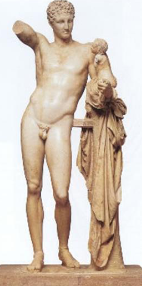
Hellenistic Period
Greek Arts
(323 BCE-31CE)
Hellenistic Era pertaining to or designating the style of the fine arts, especially sculpture, developed in the area conquered by Alexander the Great from the end of the 4th to the 1st century b.c., chiefly characterized by delicate and highly finished modeling, dramatic, often violent movement of forms in space, representations of extreme emotion, highly individuated characterization, and a wide variety of subject matter.
The word Hellenistic comes from the word ‘Hellazein’, which means ‘to
speak Greek’ or ‘identify with the Greeks’.The overlapping of Classical and Hellenistic period paved the way fo realism in as much as sculpture is concerned.
The difference between Hellenistic and Classical Art is in the style and transition of sculpting.
The Hellenistic period saw emotions, movement of figures whereas in the Classical period there is more focus on the perfect realistic figures, the sculptures are static.
Discobolus of Myron
Greek Arts
Hellenistic Period

The Farnese Hercules
Greek Arts
Hellenistic Period
Classical, 216 CE
Static action and emotion

Boxer at Rest
Greek Arts
Hellenistic Period
Bronze with inlaid copper Hellenistic, 330-50 BCE
Express emotion portraying life
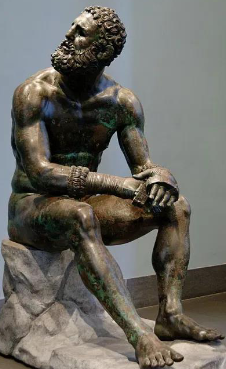
Lacoon and his Sons
Greek Arts
Hellenistic Period
Hellenistic Notable Statues
The statue ___ 200 BCE also known as ‘Lacoon Group’ was originally created by three great Greek sculptors from Rhodes namely Agesander, Polydorus and Athenodoros.
The life-size statue is made of marble and depicts a Trojan priest named Lacoon, together with his sons Thymbraeus and Antiphantes, being throttled by sea serpents.
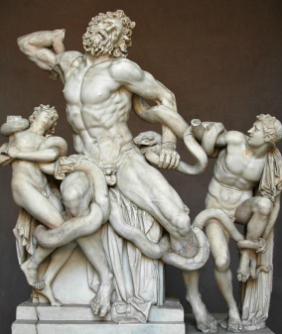
The Hunt of Alexander the Great
Greek Arts
Hellenistic Period
Hellenistic Notable Statues
Sculpture
4th Century
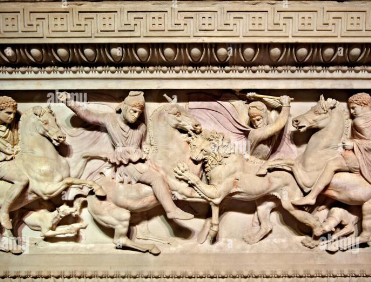
Greek architecture
Greek arts
It is known for tall columns, intricate detail, symmetry, harmony, and balance.
The Greeks built all sorts of buildings.
The main examples of Greek architecture that survive today are the large temples that they built to their gods.
The simplicity, harmony, and perspective in ___ was the foundation of Roman architecture as well.
Ancient Greek architects strove for excellence and precision which indeed are the hallmarks of
Doric, Ionic, and Corinthian
3 Orders of Greek Architecture
Doric
3 Orders of Greek Architecture
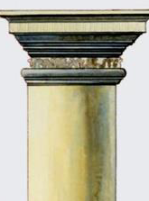
Ionic
3 Orders of Greek Architecture
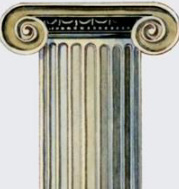
Corinthian
3 Orders of Greek Architecture

Temple of Olympian Zeus
Greek arts
Notable Architecture
Known as Olympieion or Columns of the Olympian Zeus, the ___ 561–527 BC by Peisistratos and completed under the reign of the Roman Emperor Hadrian in 131 AD.

Theater of Epidaurus
Greek arts
Notable Architecture
4th century BCE by the architect Polykleitos.
It was converted as a medical center and became the first ever medical school in the world.

Periclean Parthenon
Greek arts
Notable Architecture
Perhaps the fullest, and most famous, expression of Classical Greek temple architecture (468BCE) is the ___ of Athens.
It represents the maturity of the Greek classical form.
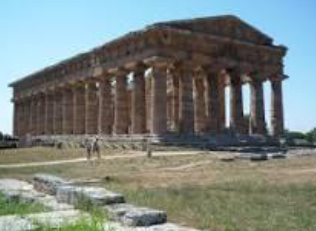
Roman Arts
Many types of Imperial art practiced by the Romans had already been fully mastered by Ancient Greek artists.
It’s normal to assume that Roman art were inspired by the Greek culture more so on architecture.
The Romans originated in central Italy, influenced by other local Italian cultures, notably those of Etruria, but from the 5th century they came into contact with the Greeks and from then onwards, the Roman republic absorbed many aspects of first Classical and then Hellenistic art.
Alexander Mosaic
Roman Arts
It is also known as the Battle of Issus Mosaic, is a Roman floor mosaic = originally from the House of the Faun in Pompeii, Italy. It is typically dated between c. 120 and 100 B.C. and depicts a battle between the armies of Alexander the Great and Darius III of Persia.

Roman Mosaics
Roman Arts
It influenced by a nearby territories of Africa to Antioch.
Mosaics, known as opus tessellatum, which means small broken pieces of black, white, and colored squares of marble, tile, glass, pottery, stone, or shells.
Typically, individual piece measured between 0.5 and 1.5 cm.
Rendering in fine or smaller detailed images, little pieces is required as little as 1mm in size.
Gypsy Girl
Roman Arts
Notable Mosaic Arts
Fragment of an ancient mosaic, Roman, 20BC

Bacchus
Roman Arts
Notable Mosaic Arts
A 3rd century CE Roman floor mosaic depicting ___, god of wine.
Flaminia, Rome
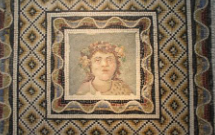
floor fragment
Roman Arts
Notable Mosaic Arts
Mosaic ___, stone tesserae from Syria, 6th century CE
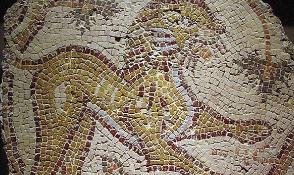
Glass-blowing
Roman Arts
Notable Glass Art
It revolutionized the art of glass-making which allowed the production of small medicine, incense, and perfume containers in new forms.
Glass unguentarium, or perfume small bottles production were prevalent throughout the ancient Roman Empire, and from Egypt to Cologne, Germany.
Glass unguentarium
Roman Arts
Notable Glass Art
___, or perfume small bottles production were prevalent throughout the ancient Roman Empire, and from Egypt to Cologne, Germany.

Thetis Portland Vase
Roman Arts
Notable Glass Art
Roman Glass
1st Century CE
The most famous example of Roman glass ware is the ‘___' which was made sometime during the reign of Augustus which depicts the marriage of Peleus and Thetis from Greek mythology.
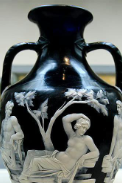
colorless glass
Roman Arts
Notable Glass Art
Roman Glass
1st Century CE
It was in the late 1st century CE that ___ first appeared in the glassmaker's repertoire and it became highly sought after by Roman households.
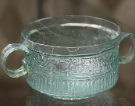
Colored Old Roman Bowl
Roman Arts
Notable Glass Art
Roman Glass
1st Century CE Colored Old Roman Bowl Discovered Intact in the Netherlands
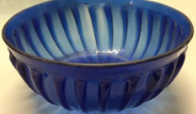
Roman Sculptures
Roman Arts
It attempt to make their subjects look more realistic, while incorporating idealistic elements from Greek art.
Many scenes show events and people that were real in a disguise but allegorical and political in nature.
Commodus as the hero Hercules
Roman Arts
Roman Sculptures
The portrait of ___ (c. 190-2 CE) is a striking example of how elite portraiture in Roman art could be both realistic and idealistic at the same time.
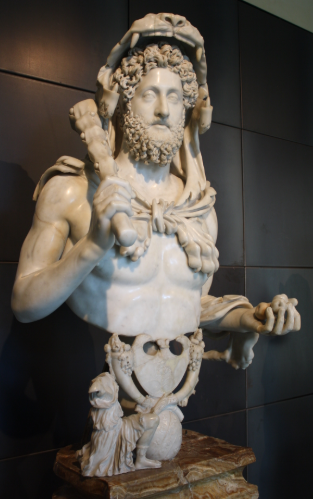
Antinous
Roman Arts
Roman Sculptures
Returning to idealized quality in Classical Greek sculpture, Roman sculpture achieved important innovation in terms of a more natural look, paint is rendered in the eyes especially in marbles.
A perfect example to this is the colossal statue of ___, c. 130 CE.
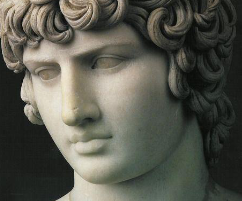
Augustus of Primaporta
Roman Arts
Notable Roman Statues
The sculpture’s function was to transmit an important imperial message to the viewer.
The statue depicts Emperor Augustus as a strong and victorious warrior and a god in an ‘orator pose’.
Many aspects of this statue communicate both his military accomplishments and his divinity simultaneously.
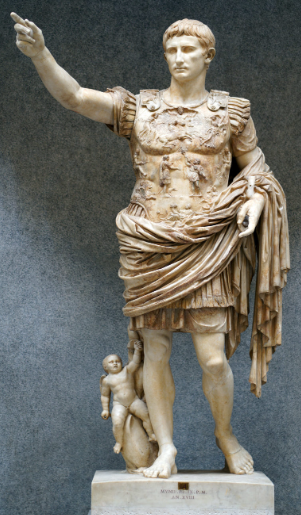
Head of a Roman Patrician
Roman Arts
Notable Roman Statues
It’s a 1st century BCE bust of a wrinkled and aged face of an unknown upper-class Roman citizen.
This marked the change of the ideal portrayal of a Roman depicting a strong and youthful image but a prized and experienced and accomplished public servant.
This also defies the Greek culture of copying or portraying images of their great mighty leaders and gods.
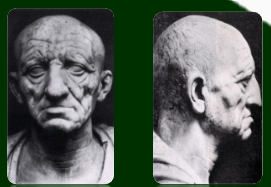
The Sleeping Hermaphrodite
Roman Arts
Notable Roman Statues
The figure had been discovered near the Baths of Diocletian in 1608 and presented to Cardinal Scipione Borghese.
In 1619, he paid Bernini for the making of the bizarre buttoned mattress on which the figure now sleeps.
At the time, the marble was believed to be a Roman copy of a Greek original by the great Polykleitos.

Marcus Aurelius
Roman Arts
Notable Roman Statues
Equestrian Statue of ___
176 CE
Equestrian statues were common in ancient Rome to honor military and civic achievements.

Gabriele Fonseca
Roman Arts
Notable Roman Statues
The Bust of ___ is a sculptural portrait by the Italian artist Gian Lorenzo Bernini.
Executed sometime between 1668 and 1674, the work is located in San in Lucina in Rome, Italy.

Ancient Roman architecture
Roman Arts
It is seen as a part of classical architecture and generally builds off of the three classical orders, Ionic, Corinthian, and Doric which were developed in ancient Greece.
Later, the ancient Romans added two of their own orders:
Composite
Tuscan.
Like other classical architecture, the Roman style emphasized proportions and symmetry.
But unlike their predecessors, the Romans placed far more emphasis on the practicality of their architectural designs.
This was a major departure from contemporary practices which had always placed the focus on:
Structure’s exterior design
Function and aesthetic appeal
Doric
Roman Arts
Roman Architecture
Classical Orders
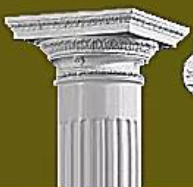
Ionic
Roman Arts
Roman Architecture
Classical Orders

Corinthian
Roman Arts
Roman Architecture
Classical Orders
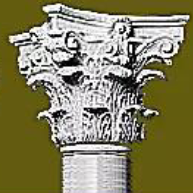
Tuscan
Roman Arts
Roman Architecture
Classical Orders

Composite
Roman Arts
Roman Architecture
Classical Orders
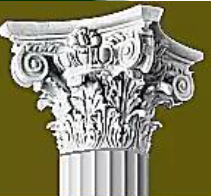
Pont du Gard
Roman Arts
Roman Architecture
1st Century CE
Aqueducts like the ___ in France are marvels of Roman engineering and architecture.
It showcase the mastery of hydraulic technology.
Roads and Bridges:
Romans built an extensive network of roads and bridges across the empire, facilitating trade, communication, and military conquest.
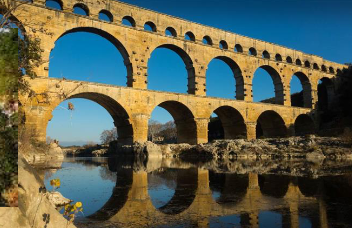
Aqueducts, Roads, Bridges, Sewers, and Heated floors
Roman Arts
Roman Architecture
Five Engineering and Architecture Marvels of the Roman Empire
Roman architecture
Ancient ___ and engineering is famous for city development which became model of urban planning to this days:
Domes and arches structures
Amphitheaters
Temples
Thermal or bath houses
Atriums and plazas
Aqueducts / drainage
Apartments / Houses
Public comfort rooms
Interior and exterior decoration artworks
Maison Carrée
Roman Arts
Notable Roman Architecture
It is the only temple constructed in the time of ancient Rome that is completely preserved to this day.
This marvel of Roman engineering was built around 16 BC in the city of Nimes.
It is an architectural gem that stands 15 meters tall and a length of 26 meters.
Built by Roman General Marcus Vipanius Agrippa in memory of his two sons who died young.
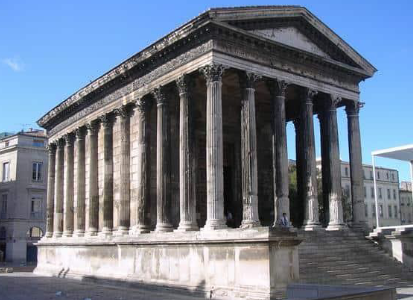
The Colosseum
Roman Arts
Notable Roman Architecture
Famous amphitheater was built an area of 189 by 159 meters, making it the largest of its time.
The said monument, began during the reign of Emperor Vespasian in 72 AD.
By the time it was finished by his son Titus in 80 AD
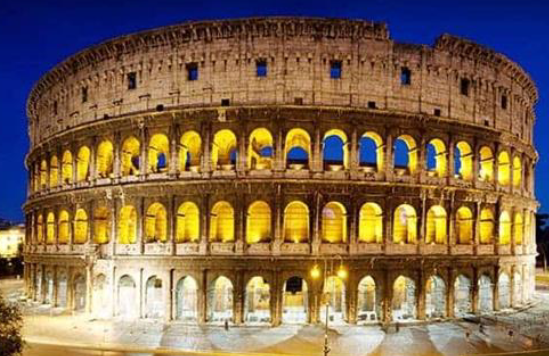
Odeon of Herodes Atticus
Roman Arts
Notable Roman Architecture
Since ancient times, the theater ___ has been a significant part of Greek culture.
Herodes Atticus built the structure in memory of his wife, Aspasia Annia Regilla.
Today, the theater played host to huge music concerts and had a capacity of 5,000.

Temple of Hera
Roman Arts
Notable Roman Architecture
One of the oldest temples in Greece, this ancient Archaic temple was dedicated to Hera the queen of the Greek goddesses built in 590 BCE.
It possesses the aesthetics of Doric architecture having its 16 columns.
The symbolic altar of the Temple was lit by a torch during the first Olympic games
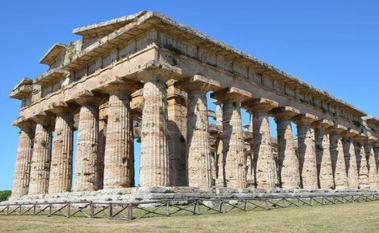
St. Peter’s Square
Roman Arts
Notable Roman Architecture
It was originally built by Architect Gian Lorenzo Bernini, 1664 is an iconic example that a city has to be built from ground zero.
A model given to the world by Roman engineers and architects

Greco-Roman city of Pompeii
Roman Arts
Notable Roman Architecture
The sophisticated ___ frozen in time.
Destroyed by the explosion of mount Visuvius 79AD which buried all Grand public buildings included an impressive forum and an amphitheatere , lavish villas and all kinds of houses, dating back to the 4th century BCE Actual ruins of the city of Pompeii and digitally restored illustration.

Roman Wall Paintings
Roman Arts
The history of Roman painting is essentially a history of wall paintings on plaster.
Some other Roman paintings were applied directly on wood, ivory, and other wall materials
Shades and Colors
Roman Arts
Roman Wall Paintings
Ancient Roman wall painters or perhaps their clients preferred natural earth colors such as darker shades of reds, yellows and browns.
Blue and black pigments were also popular for plainer designs though evidence from a Pompeii paint shop illustrates that a wide range of color shades was available.
Fresco
Roman Arts
Roman Wall Paintings
It was used to adorn the interiors of private homes in Roman cities and in the countryside.

Two ‘Faces
Roman Arts
Notable Roman Wall Paintings
Most houses in ancient Romans featured red painted walls depicting women, animals or erotic art.
This original painting of ‘___, 1st Century CE shows defined features of lips painted with reddish orange color making the eyes look expressive.
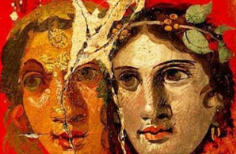
Fresco of Theseus
Roman Arts
Notable Roman Wall Paintings
This gorgeous ‘___’, 18th century was discovered from within a Basilica located in Herculaneum, Pompeii.
The painting looks spectacular and shows a few children holding Theseus’s hand and congratulating him for killing the mythological beast-Minotaur
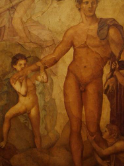
Fresco of Wader Bird
Roman Arts
Notable Roman Wall Paintings
This painting ‘___’ roaming freely in one of the gardens along Sarno river and looks astonishing with lush green surroundings, painted in serene colors of green, white and shades of yellow.
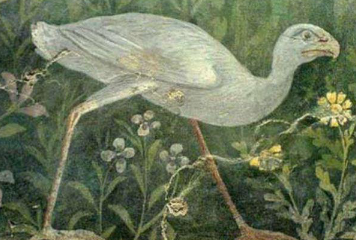
Eros and Psyche
Roman Arts
Notable Roman Wall Paintings
This wall painting shows ‘___’, 1st century CE.
Ancient Roman artists loved to portray eternal love between people and mythological characters, and one of the most popular subjects was Eros and Psyche’s love story
